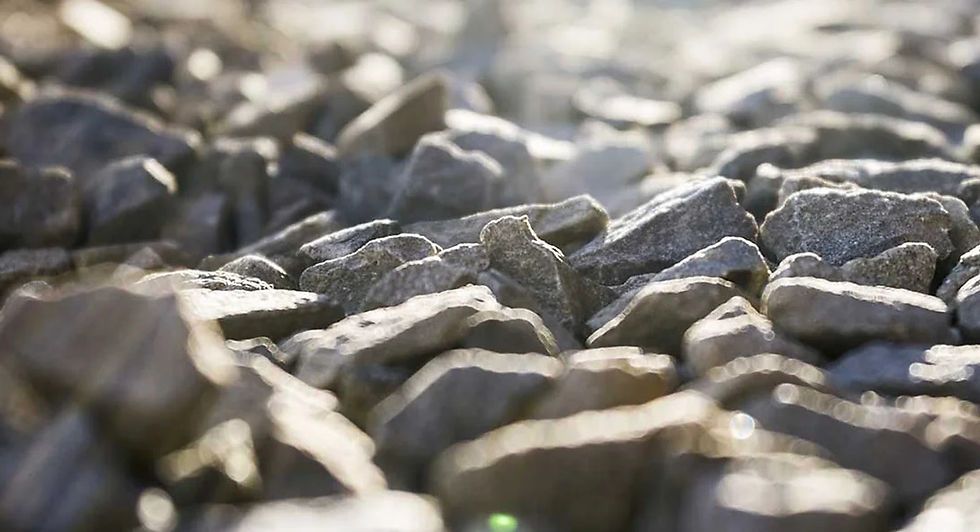Primary vs. Secondary Aggregates: What Is the Difference?
- Mark Luck
- Sep 6, 2024
- 2 min read

Aggregates, whether primary or secondary, refer to medium-grained materials used predominantly in construction. Primary aggregates, like gravel, sharp sand and stone, are the most mined material globally. Their use dates back to the Roman Empire and has remained a fundamental construction material ever since.
Read on to discover the key differences between primary and secondary aggregates and learn more about their diverse applications and benefits, from enhanced durability to promoting sustainability.
Primary Aggregates
Primary aggregates, also known as natural aggregates, are sourced directly from natural deposits, such as quarries or pits, and are widely used in construction due to their natural properties.
Common types of primary aggregates include:
● Shingle
● Sharp sand
● Building sand
● Ballast
● MOT type 1 (a limestone or granite sub-base)
Each type of primary aggregate has specific properties that make it suitable for various construction applications. For instance, while shingle is ideal for drainage systems due to its permeability, building sand is preferred for bricklaying because of its fine texture and binding properties.
Additionally, sharp sand is often used in concrete production, providing grit that improves the strength and durability of the mixture. The careful selection of primary aggregates is crucial in construction projects to create durable, long-lasting structures.
Secondary Aggregates
On the other hand, secondary aggregates are derived from reused materials rather than being extracted from natural sources. These recycled aggregates offer an eco-friendly alternative to primary aggregates and play a vital role in sustainable construction.
Repurposing materials into secondary aggregates helps reduce the demand for virgin resources. This not only conserves natural deposits but also minimises the environmental impact associated with quarrying.
Common types of secondary aggregates include:
● Crushed concrete
● Recycled sand
● IBA Crushed materials
● Crushed aggregate
Crushed concrete is an example of a popular recycled aggregate produced from demolishing and recycling old concrete structures. After the concrete has been collected, crushed, and sorted, it can be used in various applications, such as a substitute for gravel in road construction or as a base material for new concrete projects. Using secondary aggregates supports circular economy principles, where materials are reused to reduce waste and resource use in the construction industry.
Despite being more environmentally friendly, secondary aggregates are not always appropriate for construction projects. For example, in projects requiring especially high structural integrity or long-term durability, like load-bearing structures, recycled aggregates may not be suitable. Potential contamination or inconsistencies in quality can affect their performance compared to primary aggregates.
Mark Luck Ltd - For All Your Aggregate Needs
At Mark Luck Ltd, we’re your trusted partner for all aggregate needs. Whether you require primary aggregates like sharp sand for precise construction applications or recycled aggregates such as crushed concrete for sustainable building, we have you covered.
All our primary aggregates and recycled aggregates are high-quality, reliable and cost-effective. Contact us today for more information about how our aggregate solutions can be tailored to meet the needs of your construction project.
.jpg)

Comentarios